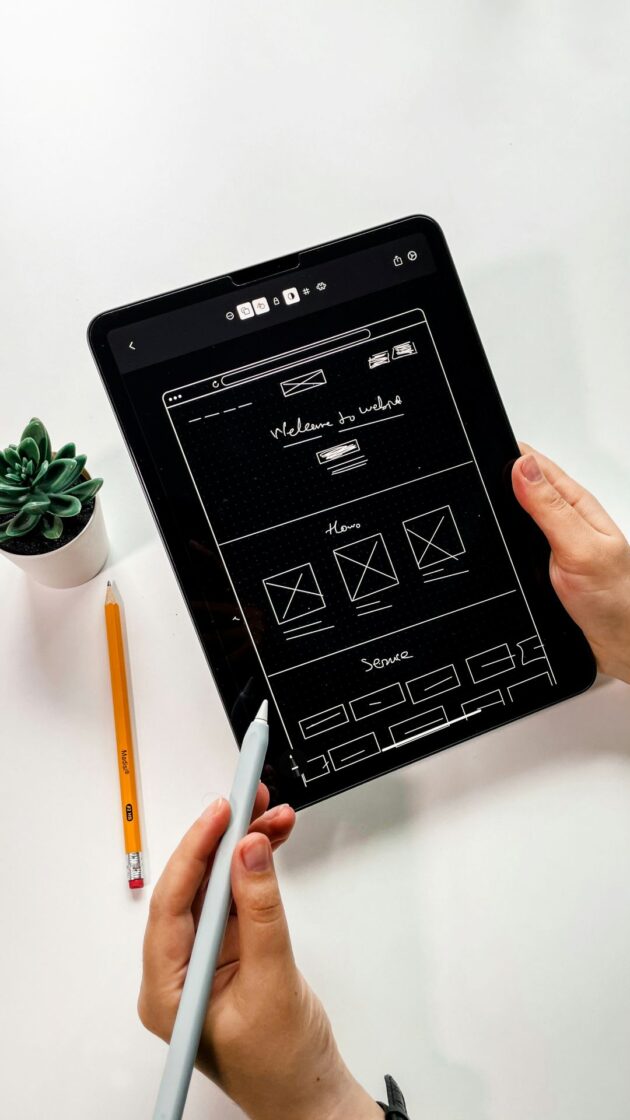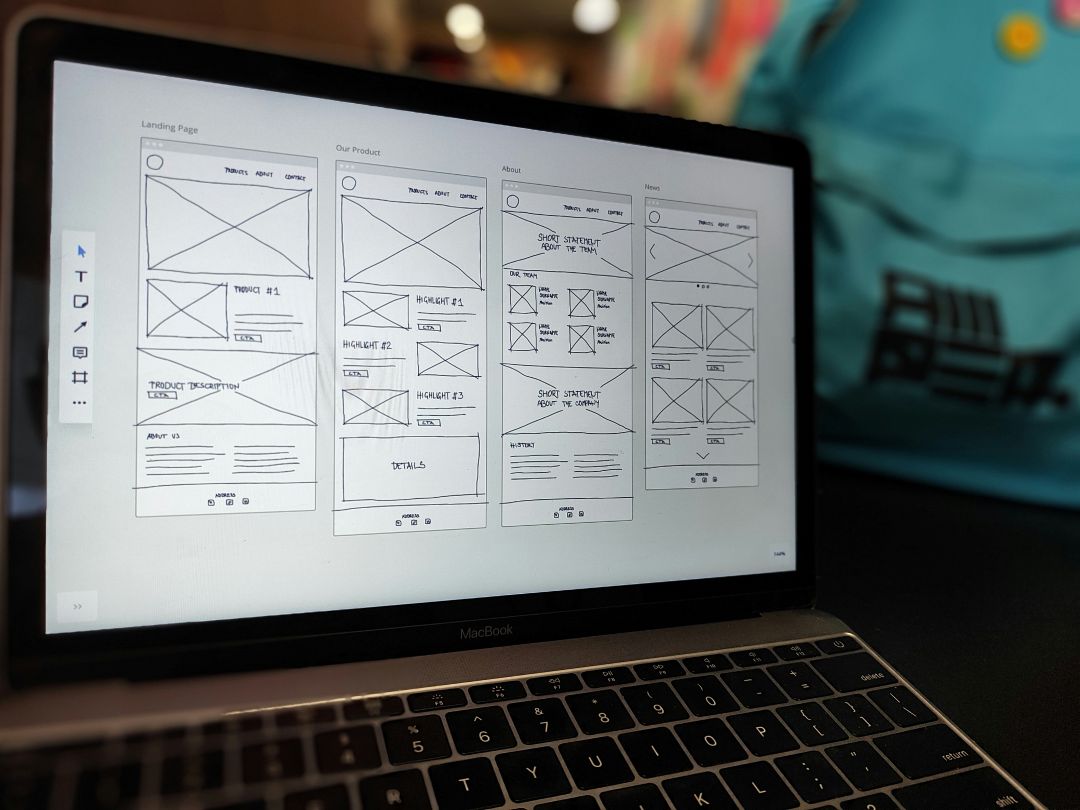The Definition of UX
User Experience (UX) is a term that broadly encompasses all elements shaping how a user feels about interacting with a particular digital or physical product. UX is not just about visual design or functionality; it involves a combination of usability, accessibility, and the overall impression left on the user.
Why is UX Important?
Good UX ensures that users can easily accomplish their goals, whether navigating a website, using a mobile app, or interacting with a service. Poor UX, on the other hand, leads to frustration, reduced engagement, and higher bounce rates for digital platforms. In competitive markets, effective UX design can differentiate a product and improve customer retention.
According to the Interaction Design Foundation, the key benefits of good UX include:
- Improved customer satisfaction.
- Increased conversion rates.
- Enhanced brand loyalty.
- Reduced need for customer support.
Core Components of UX
- Usability. Usability measures how easily users can achieve their objectives. It includes factors like learnability, efficiency, and error recovery. Usable designs minimize complexity and make navigation intuitive.
- Accessibility. Accessibility means designing products so that everyone, including those with disabilities like visual impairments or motor difficulties, can use them effectively. Incorporating accessibility features like keyboard navigation, screen reader compatibility, and sufficient color contrast is essential for inclusivity.
- Functionality. A product’s features must work as expected. Functional flaws—like broken links or incorrect data display—can degrade user trust and experience.
- Aesthetics. While functionality and usability are critical, a product’s visual and sensory appeal also play a significant role. Clean, modern, and relevant design enhances user perception and engagement.
- Emotional Impact. UX also considers how a product makes users feel. Does it evoke trust? Does it reduce stress? Emotional responses influence whether users continue using or recommend a product to others.

Principles of UX Design
- User-Centered Design (UCD). The foundation of UX design is understanding user needs and preferences. Designers gather user feedback through research and testing to create solutions tailored to their audience.
- Consistency. Consistent design elements like typography, color schemes, and navigation patterns help users feel comfortable and confident while using a product.
- Clarity. Ambiguity frustrates users. Simplified instructions, clear labels, and intuitive design layouts help reduce cognitive load, enabling users to concentrate on their tasks without confusion.
- Feedback. Providing users with immediate feedback on their actions—such as confirmation messages, error alerts, or progress indicators—keeps them informed and reassures them about the system’s responsiveness.
- Flexibility and Efficiency. Products should cater to both novice and advanced users. Features like shortcuts or advanced settings allow experienced users to accomplish tasks more quickly without overwhelming beginners.
- Minimalism. Simplicity enhances usability. Designs focusing only on essential elements reduce distractions and create a more streamlined experience.
Key Terms in UX
- Wireframes. Wireframes are essential visual guides that represent the structure and layout of a page or interface. They act as a blueprint for design and functionality.
- Prototyping. Prototypes are interactive mockups that simulate how a product will function. They enable designers to experiment with ideas and collect user feedback prior to full-scale development.
- Usability Testing. Usability testing involves observing real users as they interact with a product to identify pain points and areas for improvement. Usability testing is essential for refining a design.
- Personas. Personas are fictional representations of target users based on research. They help designers understand user goals, behaviors, and pain points.
- Journey Mapping. Journey mapping visually represents the user’s experience with a product or service over time. It highlights touchpoints, pain points, and areas for improvement.
- Information Architecture (IA). IA focuses on organizing and structuring content in a way that is logical and easy to navigate. Clear IA ensures users can find what they need quickly.
- Interaction Design (IxD). IxD deals with designing interactive elements, such as buttons, forms, and animations, to make user interactions seamless and intuitive.
- Responsive Design. This approach ensures a product functions and looks good on various devices and screen sizes, from smartphones to desktops.
UX vs. UI
Many people confuse UX (User Experience) with UI (User Interface), but they are distinct concepts:
- UX focuses on the user’s overall experience, including their journey, emotions, and satisfaction.
- UI involves the visual and interactive elements that users engage with, such as buttons, typography, and layouts.
Think of UX as the blueprint for a house and UI as the interior design. Both are essential, but they serve different purposes.

How to Measure UX Effectiveness
Measuring UX involves both qualitative and quantitative methods:
- Surveys and Feedback. Collecting user opinions through surveys or interviews provides insights into their experience and satisfaction.
- Analytics. Metrics like bounce rates, time on page, and conversion rates indicate how effectively a product meets user needs.
- Net Promoter Score (NPS). NPS gauges user satisfaction by assessing the likelihood of users recommending the product to others.
- Task Completion Rates. Observing how many users complete specific tasks reveals usability strengths and weaknesses.
- Heatmaps. Heatmaps show where users click, scroll, or spend the most time, helping identify areas of interest or confusion.

Common UX Tools
Several tools aid in creating and optimizing UX designs:
- Research Tools: Google Forms, SurveyMonkey, Hotjar.
- Design Tools: Adobe XD, Figma, Sketch.
- Prototyping Tools: InVision, Axure, Marvel.
- Testing Tools: Maze, Optimal Workshop, UserTesting.
These tools help designers gather data, visualize ideas, and refine the user experience.
Careers in UX
The field of UX offers a variety of roles, including:
- UX Designers: Focus on the overall experience and usability of a product.
- UX Researchers: Conduct studies to understand user behavior and preferences.
- Information Architects: Organize content and ensure logical navigation.
- Interaction Designers: Design interactive elements for seamless user interaction.
- Usability Analysts: Evaluate and test designs to identify areas for improvement.
Demand for UX professionals is growing as businesses increasingly recognize the importance of user-centered design.
The Future of UX
As technology advances, UX continues to evolve. Emerging trends include:
- Voice and AI Interfaces. Voice-activated systems and AI-powered assistants are becoming integral parts of user experiences.
- Augmented Reality (AR) and Virtual Reality (VR). AR and VR are creating immersive experiences, especially in gaming, education, and retail.
- Sustainability in UX. Designers are focusing on creating environmentally friendly experiences by considering energy consumption and sustainable practices.
- Accessibility Improvements. Designing inclusive products that cater to all users, regardless of their abilities, is now more emphasized.
Check out our Comprehensive ADA Compliance Checklist
Why UX Matters
Understanding what UX is and its impact is essential for businesses and designers alike. At its core, UX design focuses on creating meaningful and effective interactions between users and products. By prioritizing user needs, designers can build products that meet functional goals and delight and inspire users.
Whether you’re a business owner, designer, or end-user, recognizing the value of UX can lead to better experiences, stronger customer relationships, and long-term success.
How We Can Help
If you’re looking to enhance your website or product’s user experience, Menerva Digital is here to help. Our team specializes in crafting intuitive and impactful designs that keep your users engaged and your goals on track. Contact Menerva Digital today to take your UX to the next level!





